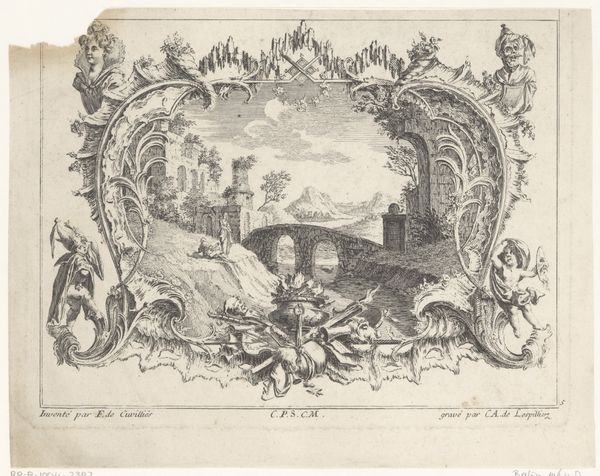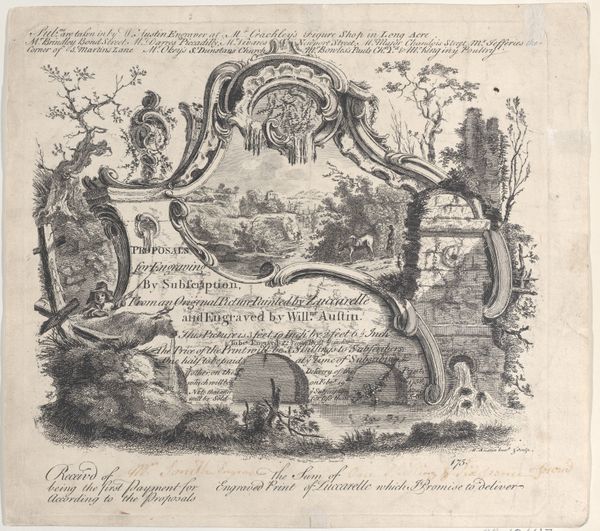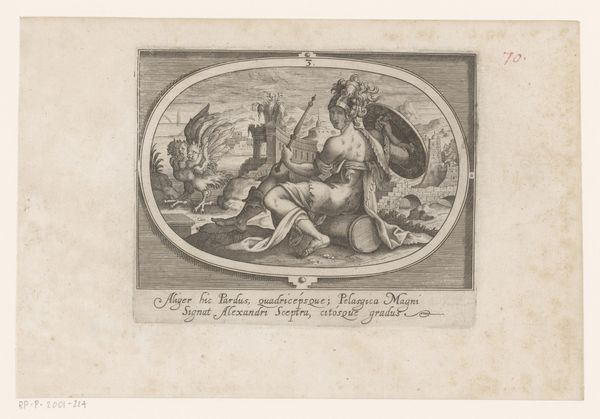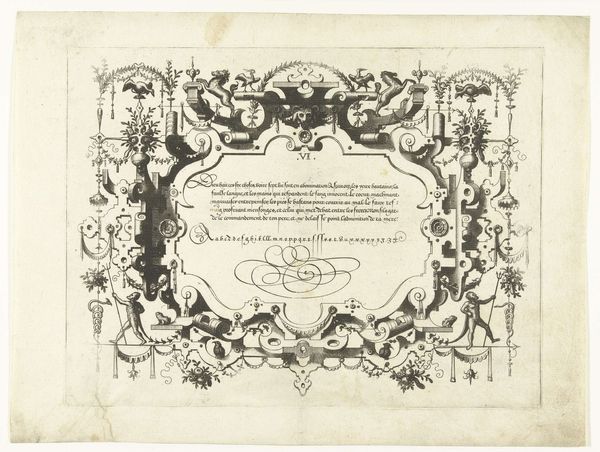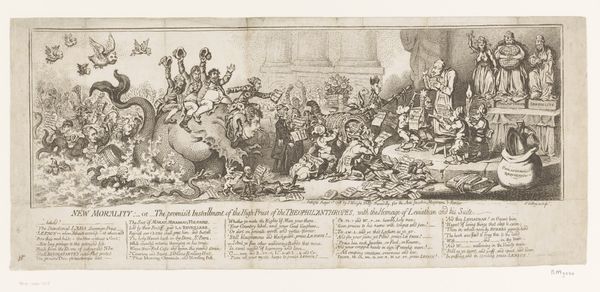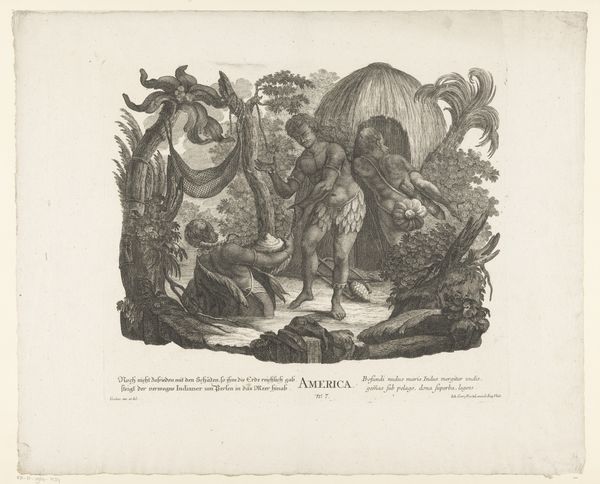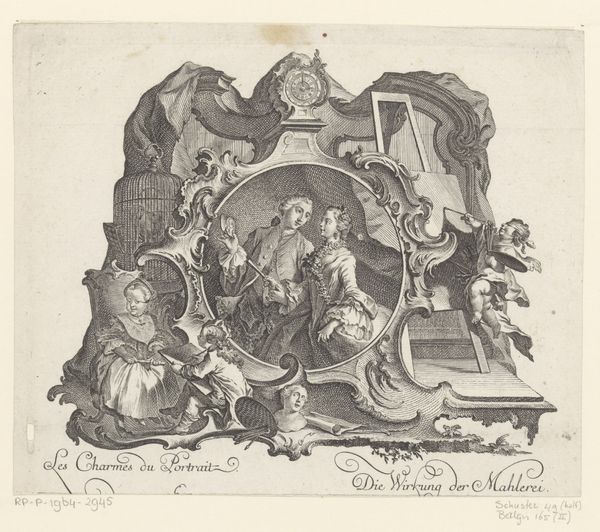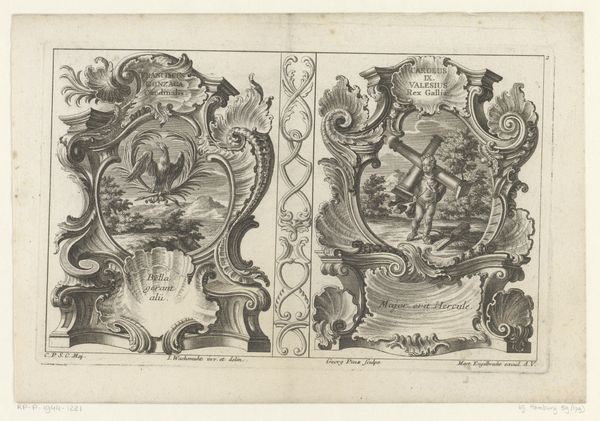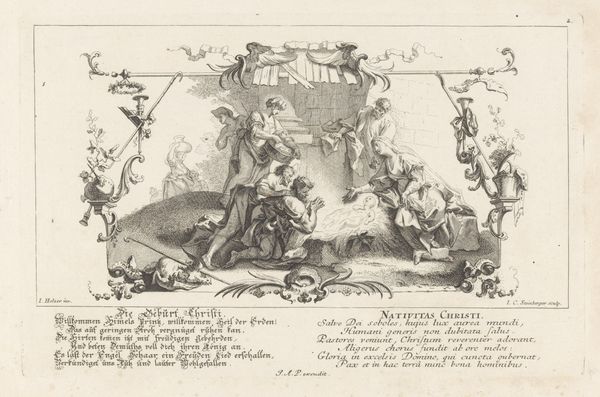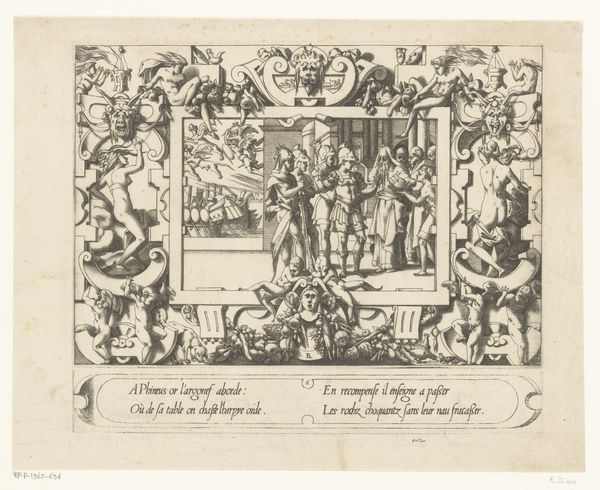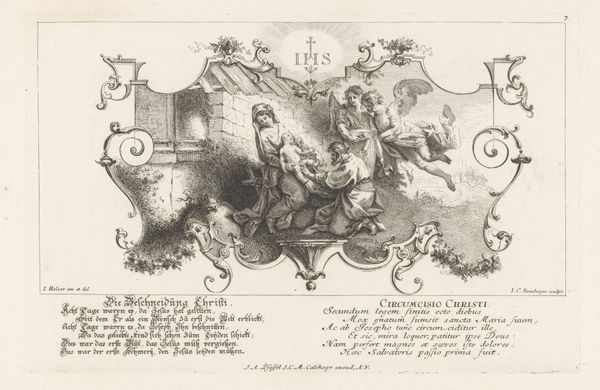
Plusievrs Pieces et Ornements Darquebuzerie (4th extended edition) 1751 - 1801
0:00
0:00
Dimensions: 9 1/2 x 12 3/4 in. (24.1 x 32.4 cm) to 9 1/4 x 14 in. (23.5 x 35.6 cm)
Copyright: Public Domain
Curator: Before us, we have "Plusievrs Pieces et Ornements Darquebuzerie," an engraving by Claude Simonin, likely created between 1751 and 1801. What are your initial impressions? Editor: The intricate linework immediately strikes me. It's dense yet precise, creating a symmetrical composition filled with baroque exuberance. The stark contrast adds to its dramatic flair, drawing the eye across the ornate details. Curator: Indeed, its Baroque character is quite evident. Beyond the stylistic elements, this piece speaks volumes about the era’s fascination with militaristic power. The weaponry isn't merely decorative; it symbolizes status, control, and the complex politics of 18th-century Europe. Editor: Agreed, although I’m more interested in the purely formal relationships here. Note how the lines create volume and depth, while the composition expertly balances positive and negative space, adding complexity to what otherwise might read as simply decorative. The use of repeated motifs is masterful. Curator: I see those elements contributing to the image's overarching propaganda, emphasizing the importance of military might in shaping social identities and power dynamics during that period. It begs questions about who the artwork was intended for. Likely powerful families looking to decorate their firearms and related objects. Editor: Fair point, the title even indicates that the image’s primary function was ornamentation for weapons. Nonetheless, I cannot dismiss how successfully the engraving utilizes geometrical forms and contrasts to achieve its purpose, propaganda or otherwise. The careful consideration for composition creates a rich, cohesive visual language. Curator: Ultimately, understanding its structure helps us deconstruct the political messaging woven throughout. Recognizing its aesthetic purpose does not absolve its implication in social hierarchies. It is also fascinating that the piece lives within a broader context of art history which still struggles to discuss art's inherent engagement within power dynamics. Editor: Perhaps it is precisely that tension – between aesthetics and politics – that makes the artwork so compelling to this day. Curator: I’m glad we can appreciate that about it. I’m now walking away from this conversation having considered new viewpoints for understanding historical engagement.
Comments
No comments
Be the first to comment and join the conversation on the ultimate creative platform.

